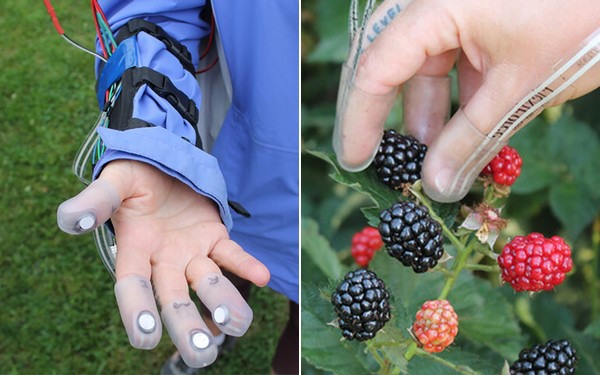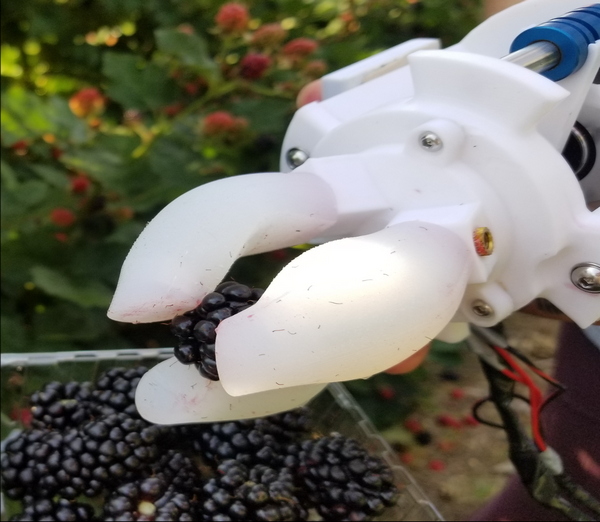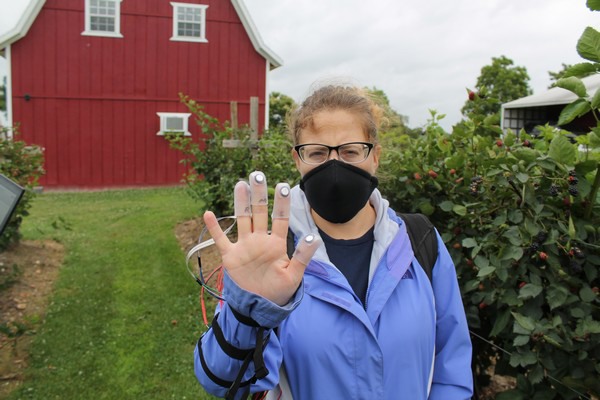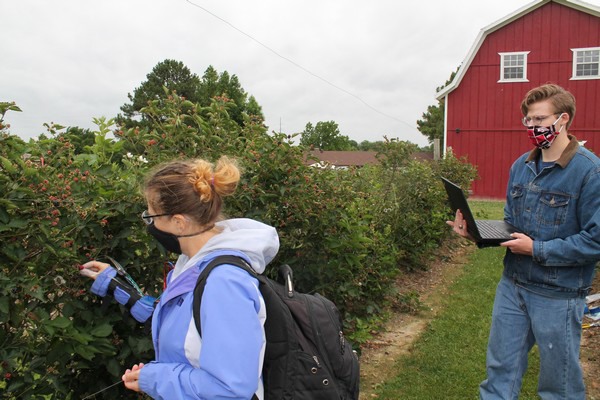Imagine an autonomous bi-pedal robot with 10 arms, each tipped with three-fingered silicone grippers picking its way through rows of blackberries, and you’ll have an idea of what the future could hold for blackberry farms facing a labor shortage.
Researchers in Arkansas and Georgia have shown that delicate fresh-market blackberries, typically picked by human hands to maintain quality, can now be picked by robots too.

“Just imagine a robot walking through a blackberry farm, but the robot has 10 arms,” said Renee Threlfall, food science research scientist with the Arkansas Agricultural Experiment Station, the research arm of the University of Arkansas System Division of Agriculture.
Threlfall and three other authors have been researching robotic picking and recently received the Outstanding Fruit Publication Award from the American Society for Horticultural Science for their work. The award recognized an article on the research that laid the groundwork for developing a soft robotic hand to develop an autonomous blackberry-picking robot.
The research to establish force parameters to pick blackberries was funded in part by a University of Arkansas Chancellor’s Innovation and Collaboration Fund grant with Yue Chen, previously an assistant professor in the University of Arkansas mechanical engineering department. Chen is now an assistant professor in the biomedical engineering departments at the Georgia Institute of Technology and Emory University. An Arkansas Department of Agriculture Specialty Crop Block grant also supported the initial research.
Andrea L. Myers was the lead author of the publication as a food science graduate student at the University of Arkansas. She collaborated with Threlfall, along with Chen and Anthony Gunderman, a Ph.D. student in robotics at Georgia Tech’s Institute for Robotics and Intelligent Machines. Gunderman was previously a doctoral student in mechanical engineering at the University of Arkansas.
The 2022 paper, “Determining Hand-harvest Parameters and Postharvest Marketability Impacts of Fresh-market Blackberries to Develop a Soft-robotic Gripper for Robotic Harvesting,” was published in the journal HortScience.
What’s safe for fruit?
Myers said the first step in the process for this project was to establish the amount of force needed to pick blackberries by hand with the least amount of damage to the fruit. It turns out that to harvest a blackberry, it takes about half of 1 Newton, a unit of force. Simply, 1 Newton could be thought of as the effort required to lift a small object like an apple or a candy bar, Myers said.

To figure out the amount of force required to pick a blackberry and cause as little damage to the berry as possible, the project team devised silicone finger sleeves with biometric sensors that measured the force used by a human hand to grab and harvest a blackberry.
With the force-sensing apparatus worn by a human, Myers picked more than 2,000 blackberries from commercial Arkansas growers, Sta-N-Step Farm and Neal Family Farm, in 2020. The data showed that the thumb applied the highest force, followed by the middle, index, and ring fingers. Four fresh-market, Arkansas-developed varieties were picked: Natchez, Osage, Prime-Ark® Traveler, and Sweet-Ark™ Caddo. The blackberries were evaluated after 21 days of cold storage at 35 degrees Fahrenheit.
The researchers compared the quality of the blackberries with and without the force-sensing apparatus, and the results showed that the finger sleeves did not impact berry quality. The research also showed that only three appendages were necessary, instead of four, to harvest a blackberry.

Guitar string tendons
The second phase of the research was done in 2021 with collaborators Chen and Gunderman during their time at the University of Arkansas, where a three-pronged, tendon-driven, soft robotic gripper was developed using a thick guitar string as the tendon. The forces applied to grab, stabilize and harvest the blackberries with the gripper did not cause excessive damage after cold storage for 21 days.

However, the fruit harvested with the gripper in 2021 had 11 percent more leakage and 7 percent more red drupelet reversion — when the individual round segments on the blackberry turn from black back to red — than fruit harvested by hand. The project team published another paper in 2022 describing the gripper implementation titled “Tendon-Driven Soft Robotic Gripper for Blackberry Harvesting.”
“When blackberries are ripening on the plant, they turn red to black. However, during or after harvest, drupelets on the berries can turn red, especially if the berry is damaged during harvest,” Threlfall said. “The red color after harvest doesn’t have to do with ripeness but has more to do with damage to cellular structure. This is important because USDA has standards and grades for this red drupelet reversion so if a certain percentage of blackberries in a container have red drupelet reversion, they are rejected.”
Source: uaex.uada.edu
